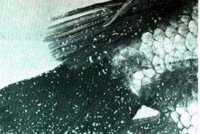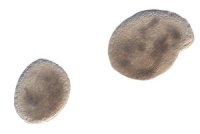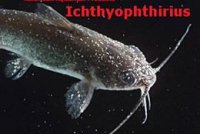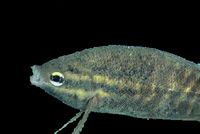
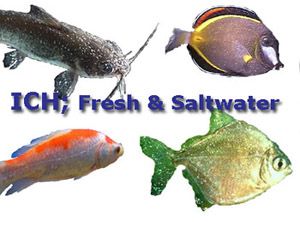 By Carl Strohmeyer-PAMR 35+ years experience
By Carl Strohmeyer-PAMR 35+ years experience
Updated 12/5/16
INTRODUCTION
This includes general information about both Ichthyophthirius (freshwater) & Cryptocaryon (saltwater)
Ich, also called white spot disease, is one of the most common protozoan infections affecting aquarium and pond fish.
The scientific name for freshwater ich is Ichthyophthirius multifilis".
The marine protozoan causing ich is Cryptocaryon irritans (for more information about Cryptocaryon, please scroll towards the bottom of this article). Both organisms cause whitish spots, called cysts, to appear on the bodies and fins of the infested fishes.
As common as this disease is, there is also a lot of misunderstanding and often down right misinformation. Stress is correctly recognized as a major factor in ich infestation outbreaks, however causes of this stress are not always recognized.
Here are a few causes of stress that makes it easier for an ich infestation to take hold (first commonly known stressors):
- Sudden drops in temperature.
- Stress caused by transfer of a fish from one tank to another.
- Stress from other fish chasing or bothering another.
- Stress from high ammonia/nitrites.
- Even Stress from long term nitrate levels over 40 ppm increases the incidence's of Ich and lengthens time of treatment
Equally important stressors that are often forgotten:
Please read on for more in depth information on freshwater and saltwater Ich that is gathered from current research AND years on controlled studies on my part.
For Marine Ich, please read the *Diagnosis, *Life Cycle, & *Prevention Section for useful information that still applies to Cryptocaryon, then I recommend reading the more specific information about Marine Ich further in this article.
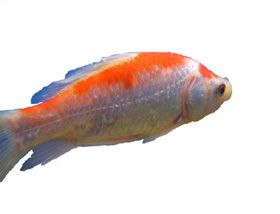 DIAGNOSIS:
DIAGNOSIS:
The usual way of diagnosing ich is by close observation of the infected fish.
The presence of small, (.5 to 1.0 mm) white dots (kind of like salt) scattered about on the fishes' skin is an indicator. This is most easily observed around the tail or fins (especially if the fins are normally clear).
You can also check this diagnosis by removing one of the spots and observing it under a microscope. Ich has a small micronucleus and a prominent crescent-shaped macronucleus.
Fish behavior: The fish will often hide in corners near the top of the aquarium to get oxygen, more so as the disease progresses. Sometimes the fish are observed bobbing up and down with their head above the surface, again in an attempt to get extra oxygen as ich infestations often start in the gills and this robs the fish of the ability to properly respirate. Fins are often held down and are clamped as well.
Darting and scratching is also sometimes exhibited (although this is more a symptom of velvet in Fresh water or oodinium infestations in salt water). As the the infestation progresses, the fish become more listless, lose color, and often develop secondary fungal and/or bacterial infections.
LIFE CYCLE:
Ich is most often introduced into the aquarium or pond by adding new fish or aquatic plants. Ich is not air borne.
Tomites which have only recently attached themselves to the host will not be readily visible. It is good aquarium and pond keeping practice to isolate any new fish for at least four days under close observation.
